SEASON PREMIERE 2018 - Shuttleworth Collection / Old Warden / UK
Update: 2019/12/25 by Robert Kysela / CHK6
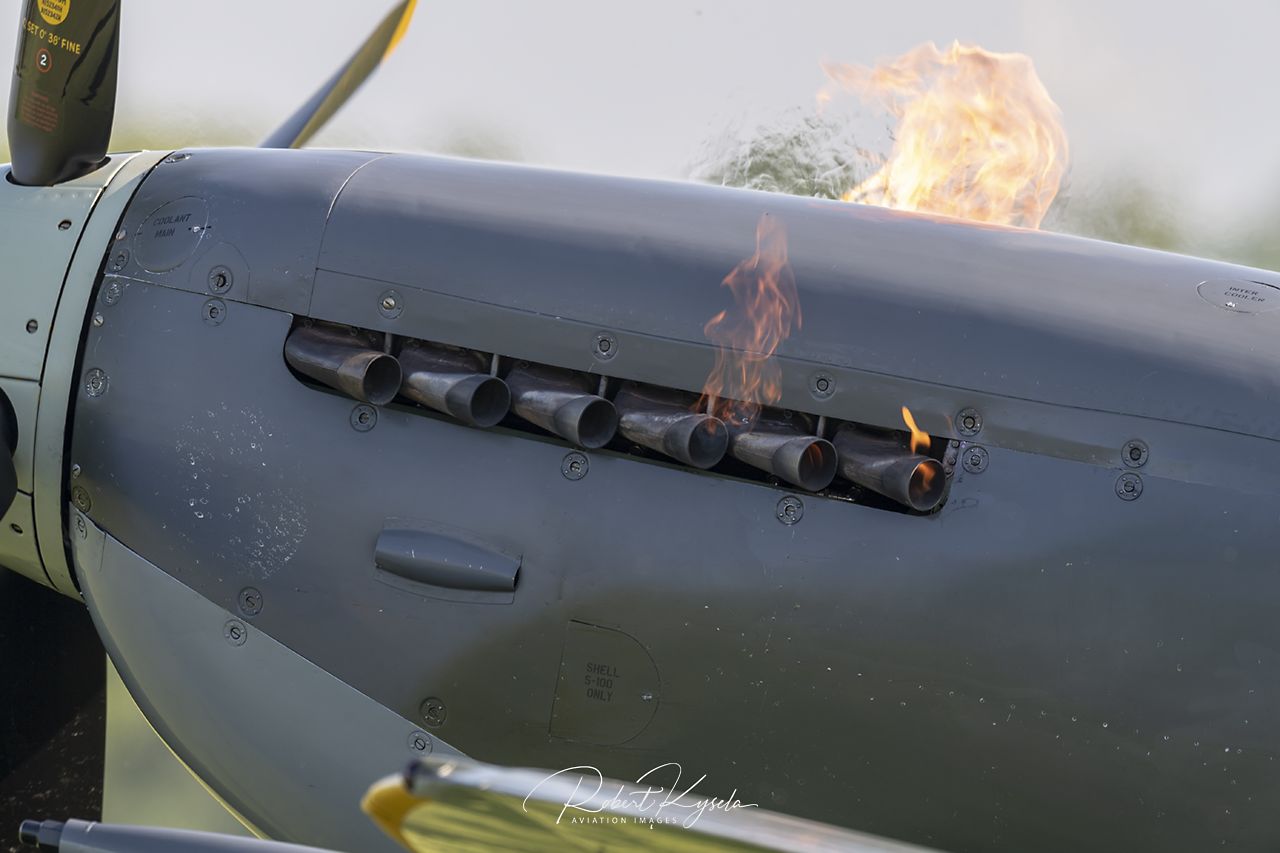
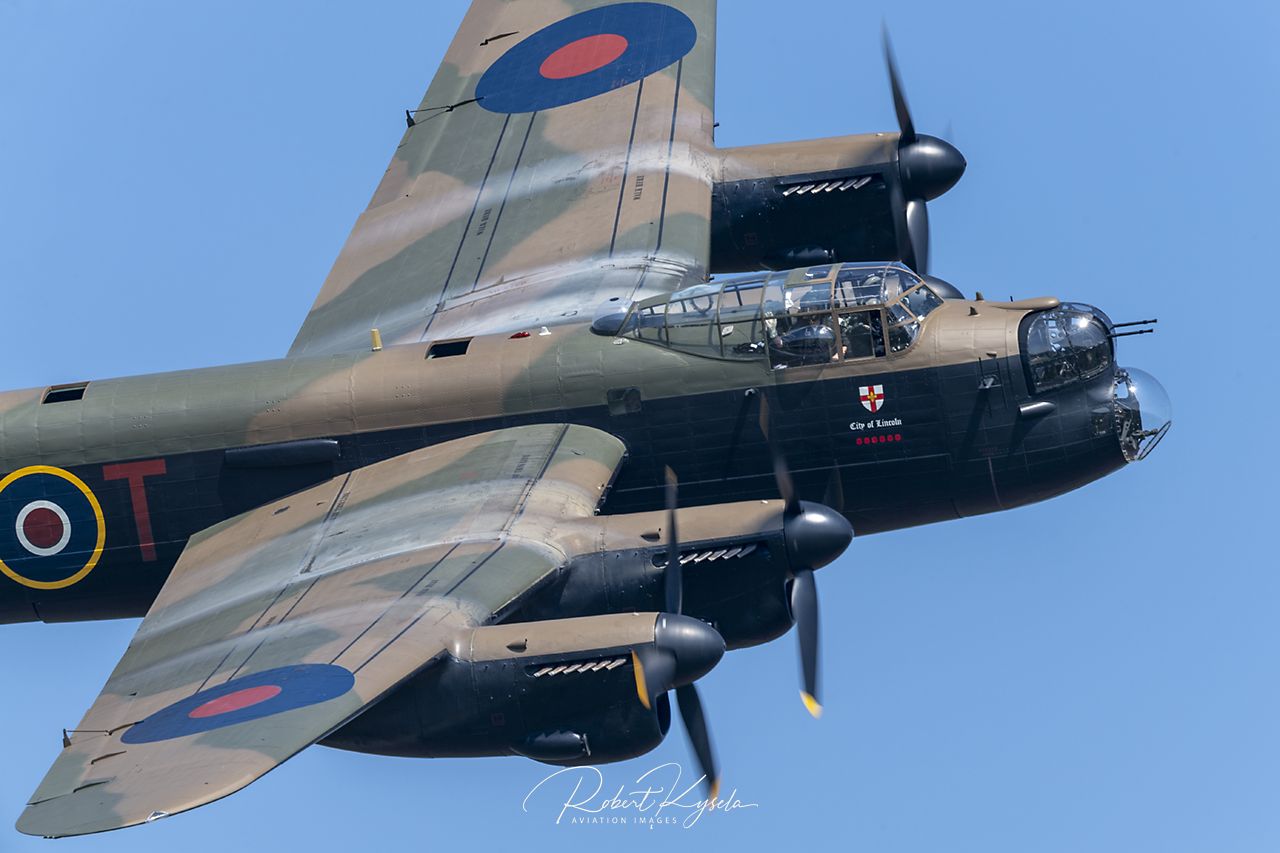
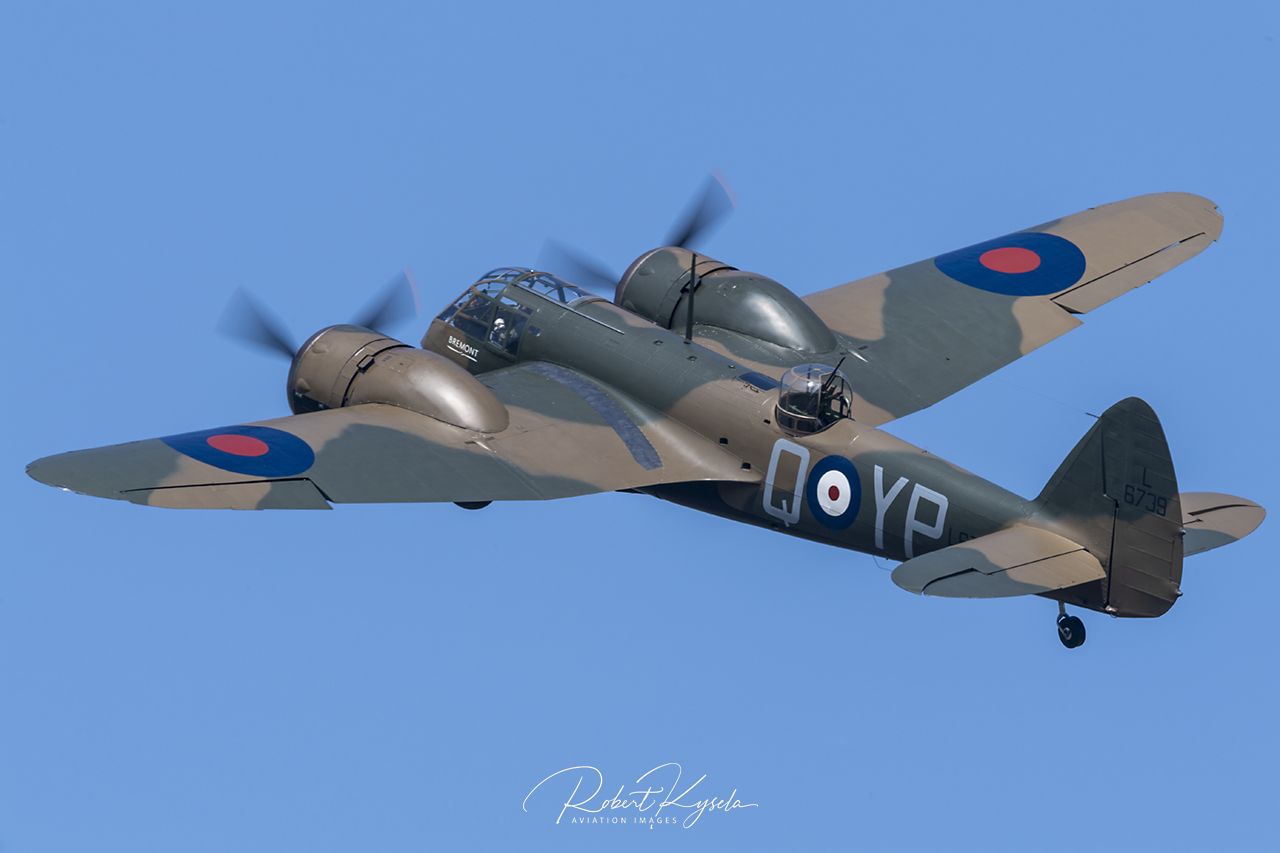
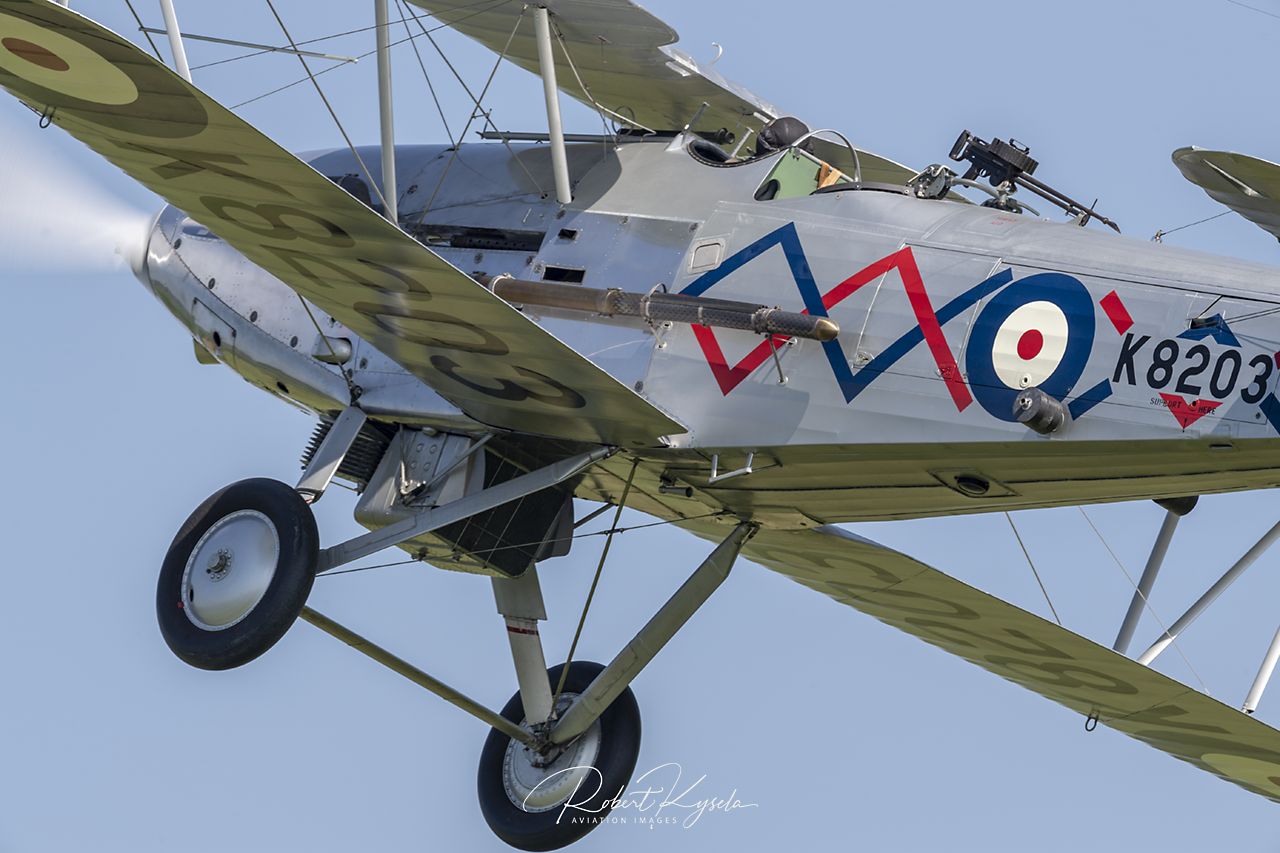
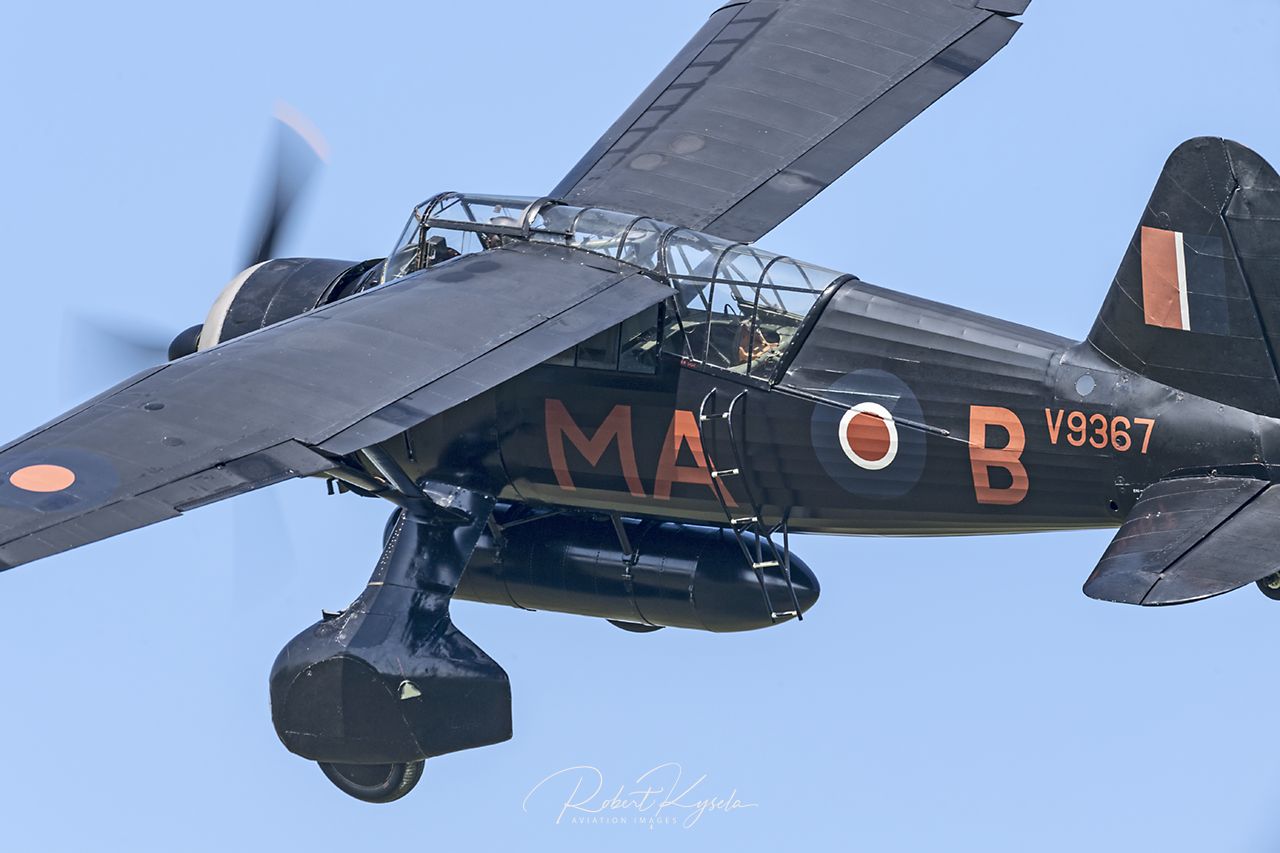
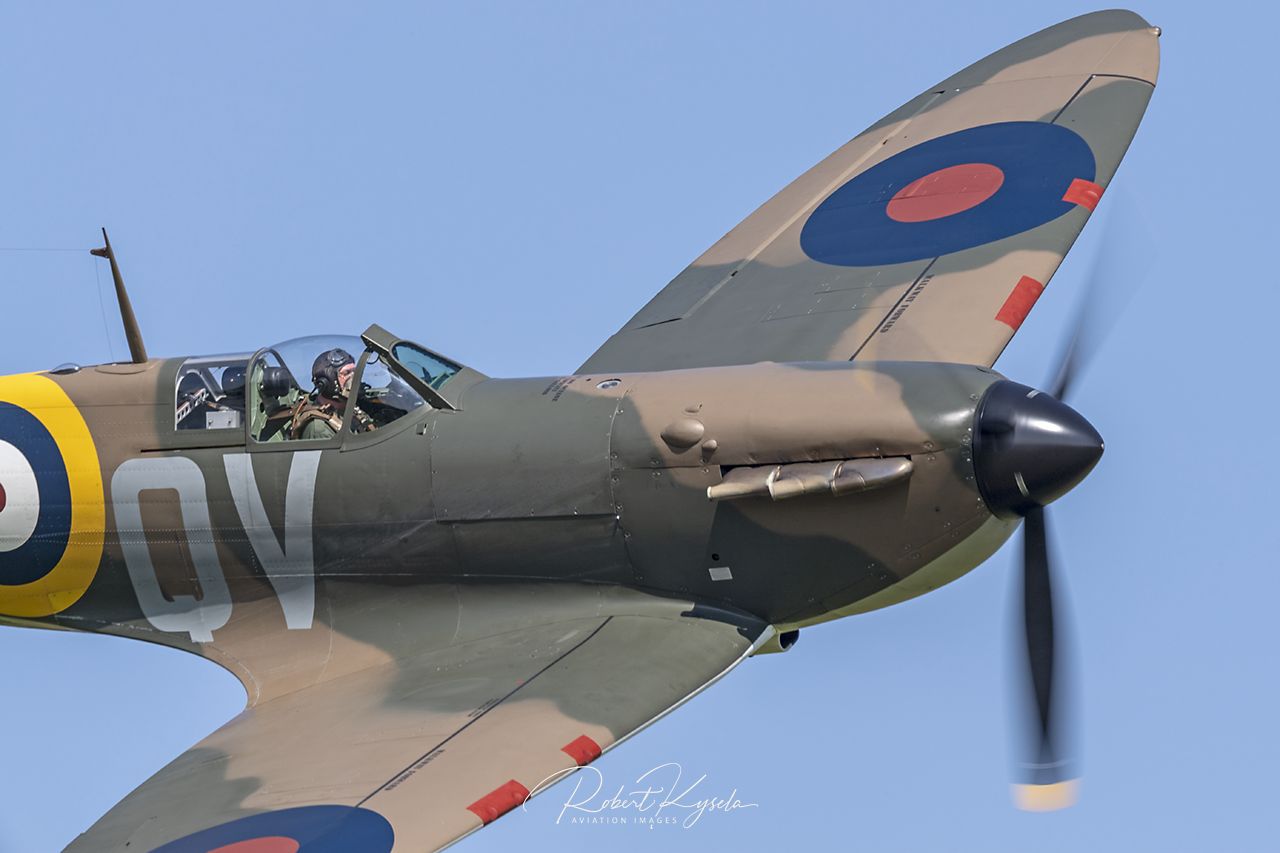

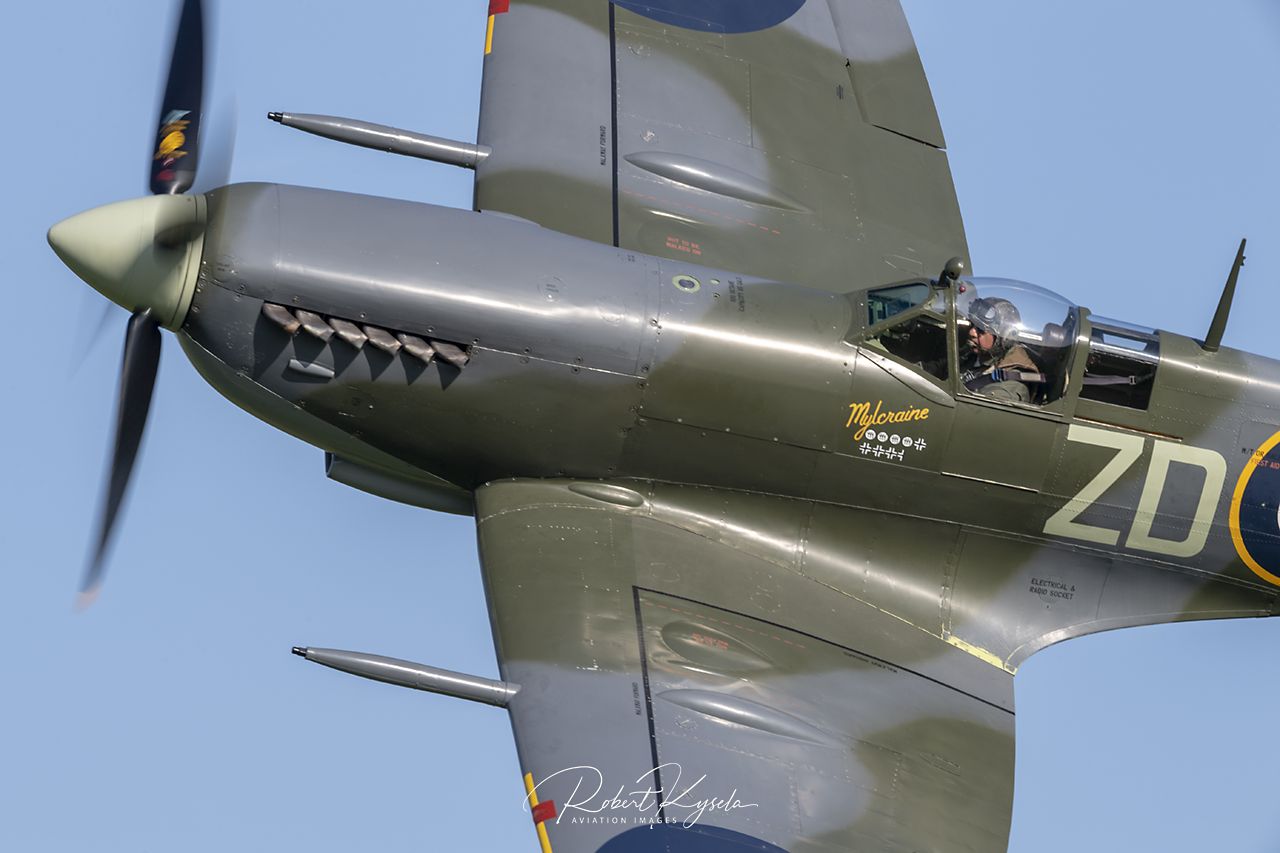
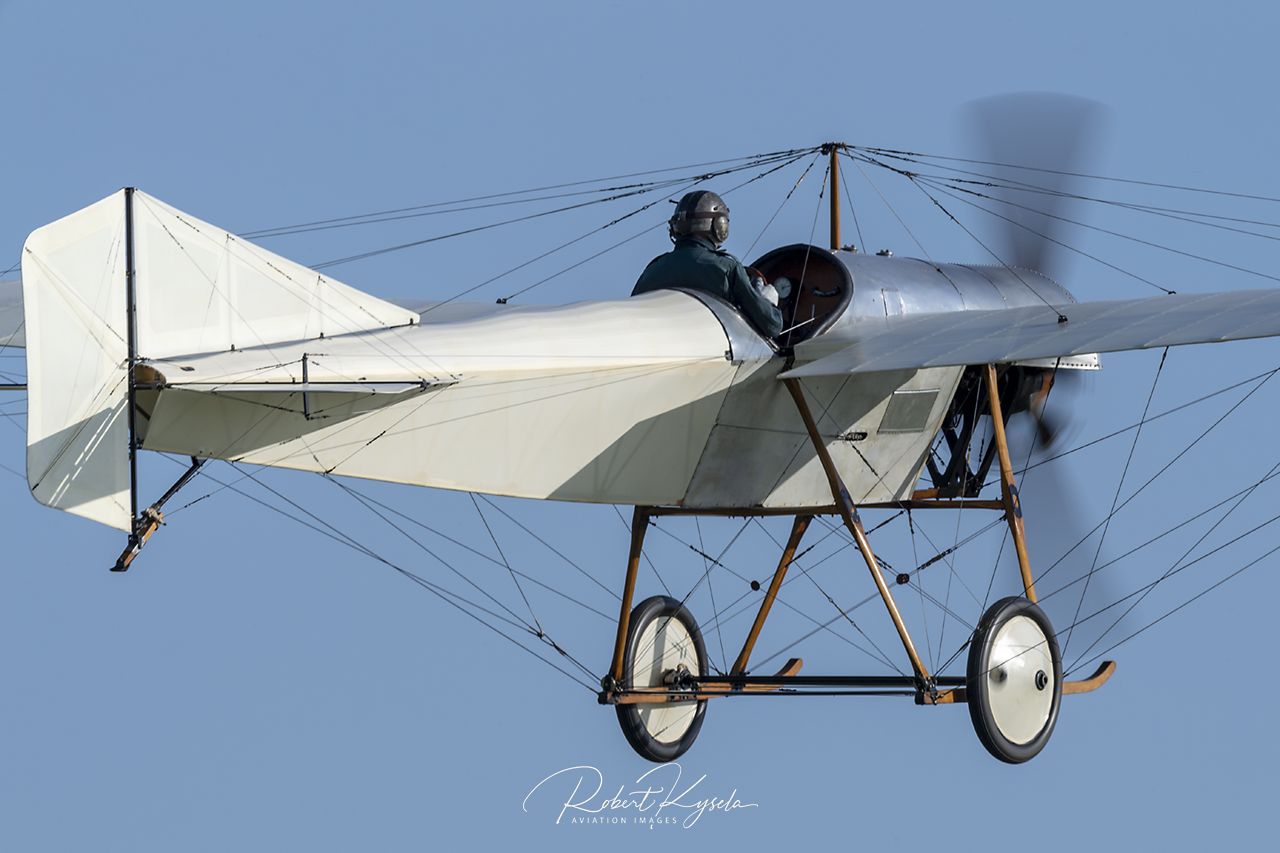
The United Kingdom (UK) can claim to have founded the very first independent air force in the world. Before the end of the First World War, the Royal Flying Corps (RFC) and the Royal Navy Air Service (RNAS) were formed in to an independent air force, the Royal Air Force (RAF). On April 1, 1918 the RAF was officially commissioned and was put under control of a new ministry, the so-called Air Ministry (founded on 2. January 1918). The first aviation minister was Harold Harmsworth, 1st Viscount Rothermere – actually a newspaper magnate and publisher of the Daily Mail as well as the Daily Mirror. The former RFC’s Chief of Staff, Sir Hugh Trenchard is considered to be the military “father of the RAF” – interestingly, he resigned from his designated post, before the RAF was officially founded, only to accept the very same position as Chief of the Air Staff a year later. Accordingly the first chief of staff of the RAF was Air Vice Marshall Sir Frederic Sykes.
In 1936, before the outbreak of the Second World War, the RAF was restructured, and divided into various groups, of so-called Commands.
R. Kysela
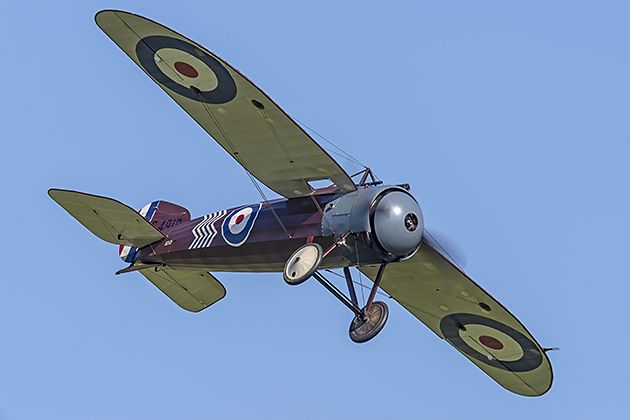
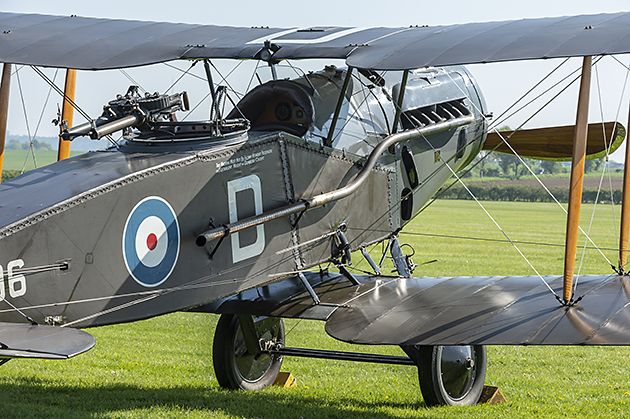
In the forthcoming years the RAF’s main task was to survive the drastic reduction of personnel and equipment (at the time of the truce, the RAF had a staff of nearly 300,000 men and an incredible fleet of 22,647 aircraft!). Nevertheless there was enough to do, especially in the former British colonies where so-called air policing operations were flown in the Middle East (Iraq, Afghanistan, Kurdistan, Jordan, Somaliland, etc.). In 1936, before the outbreak of the Second World War, the RAF was restructured, and divided into various groups, of so-called Commands. The original 3 Commands (Fighter Command, Bomber Command and Coastal Command) were joined later by other groups, such as the Maintenance Command, the Transport Command or the Flying Training Command. Today, there is little left of the original structure as the entire RAF is under a single Air Command.
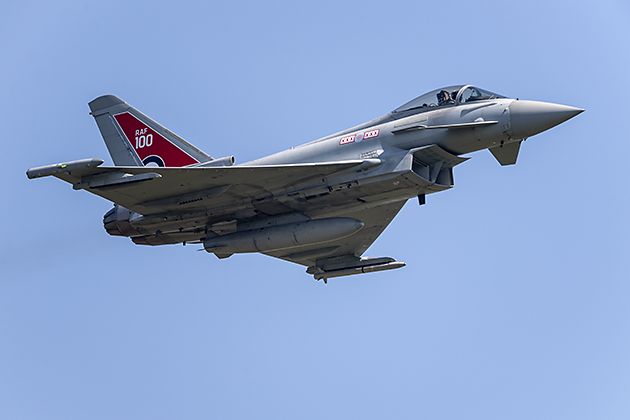
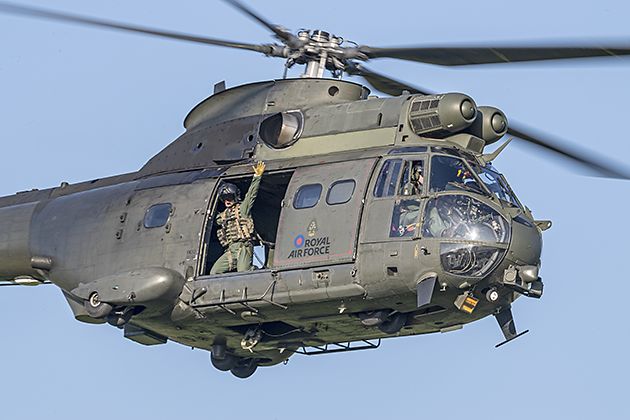
The RAF is today, at least in terms of the number of aircraft and employees, bears no comparison with the huge force that it represented even in the 1960s and 1970s. Drastic budget cuts after the end of the Cold War and again in recent years (under Prime Minister David Cameron’s administration) have left their mark on the RAF. Nevertheless, the RAF operates at least 660 aircraft in total, including 180 combat aircraft (125 x Typhoons FGR.Mk.4; 30 x Tornado Gr.Mk.4; 15 x F-35B Lightning II & 10 x MQ-9 Reaper). Compared to the European NATO partners, the RAF should not to be underestimated.
Even 78 years after the end of the Battle of Britain it is still deeply rooted in British thinking.
R. Kysela
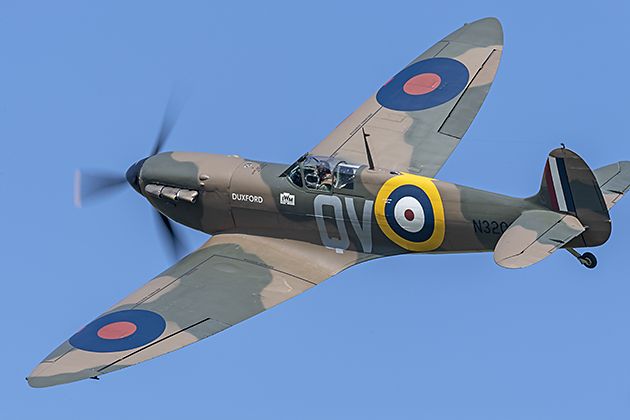
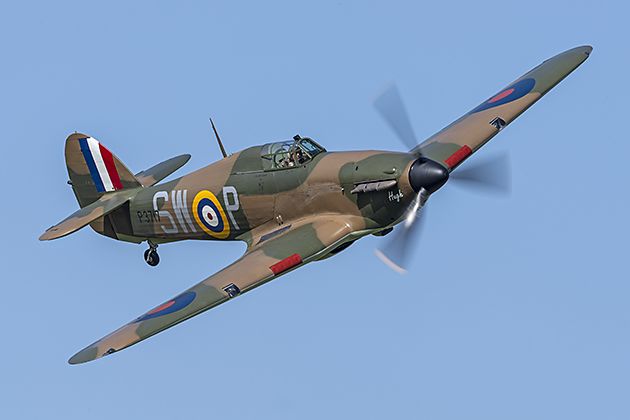
In its 100 years of existence, the RAF can look back on an eventful but proud past. It was the aircraft of the RAF, which bore the brunt of the struggle in the “heaviest hour of the empire” (according to Sir Winston Churchill). Even 78 years after the end of the Battle of Britain it is still deeply rooted in British thinking. The Battle of Britain Memorial Flight (BBMF) with its Avro Lancaster B.Mk.II, Supermarine Spitfire and Hawker Hurricane fighters ensures, that this glorious piece of British aviation history will not be forgotten
SEASON PREMIERE at OLD WARDEN, SHUTTLEWORTH COLLECTION
Although the RAF is celebrating its 100th anniversary this year, there will not be any officially organized flying event for this unique birthday. However, four events* are declared Centenary Events in the United Kingdom (UK), each focusing on the 100th anniversary of the RAF. The first event of its kind took place on May 6th in sunny weather at Old Warden, home of the Shuttleworth Collection. This unique private collection has a repertoire of aircraft and equipment that is second to none in the UK alone.
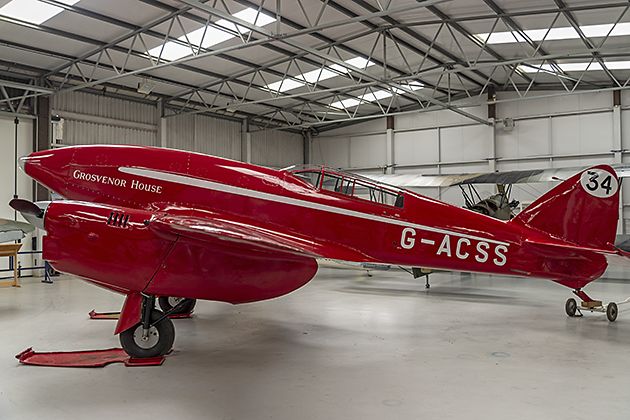
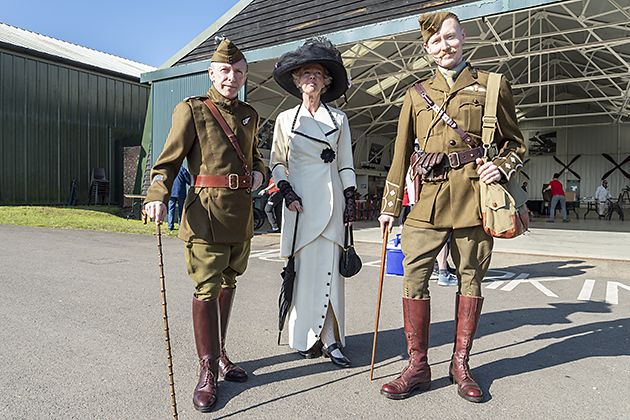
The Shuttleworth Collection contains vintage aircraft, cars, motor bikes and industrial and farming machinery. A typical English landscape surrounds the grassy slope and the apron, beautifully landscaped gardens (called Swiss Garden) can be admired next to the collection and the museum as well as a unique Victorian building (The House). The great draw to Shuttleworth for the aviation enthusiast is the vintage aircraft. Nowhere else is such a collection maintained in flying condition and displayed regularly. The other great thing about the display days at Shuttleworth is your proximity to the aircraft. From the fence line the display aircraft are parked just a few metres away. When started up the crowd get to feel the prop wash of the aircraft. Pilots too are happy to chat at the fence to the eager audience, something not available at most airshows. The very nature of the collection makes it somewhat susceptible to the weather as many of these aircraft are quite fragile and unique, but for this show the weather was forecast to be very good indeed.
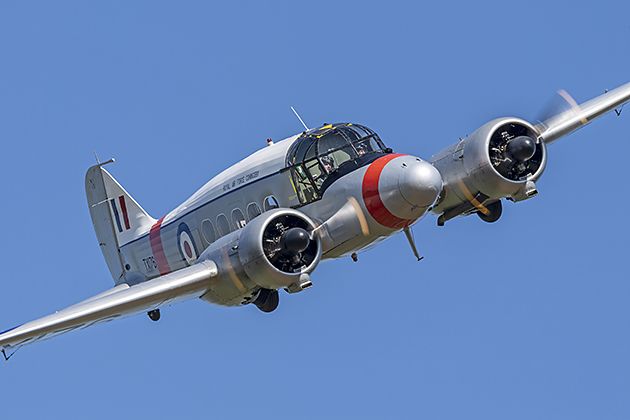
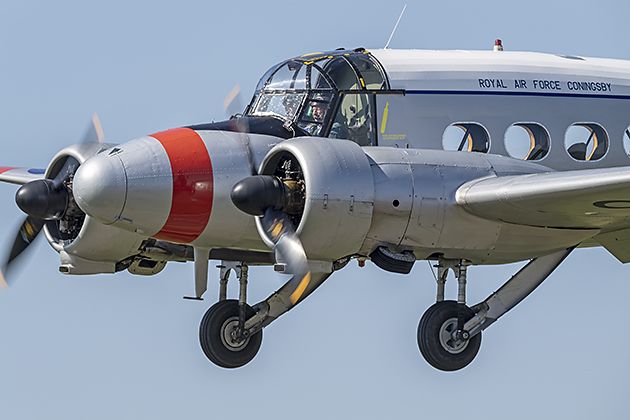
A special highlight in the flying programme was an Avro Anson XIX Mk.2. This aircraft has been owned by BAE Systems since 1981 and has so far been in civilian colours (wings in silver, hull in light blue). For the RAF celebrations, its colour scheme is reminiscent of one of the Anson last in use. The RAF used this twin-engined low-wing aircraft until 1968, mainly for multi-engine pilot training, and as a trainer for navigator and radio operators, as well as for light transport tasks. Originally designed as a light passenger and transport aircraft, it was the military version, which brought full order books to the manufacturer, Avro Ltd based in Woodford, Manchester. Up to the cessation of production in 1952 some 8138 were built there, and another 2882 Anson’s were manufactured under licence by Federal Aircraft Ltd of Canada.
Worldwide there are currently only three aircraft of this type in airworthy condition!
R. Kysela
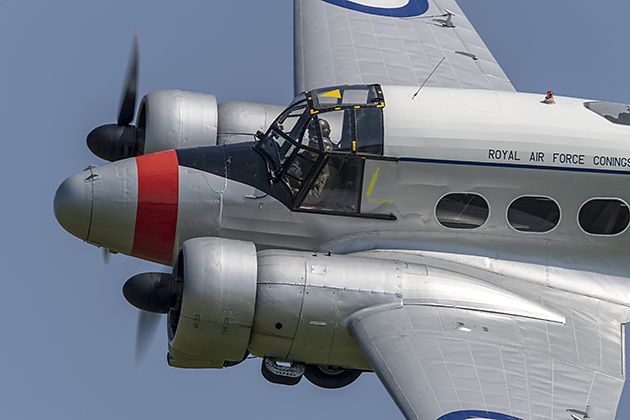
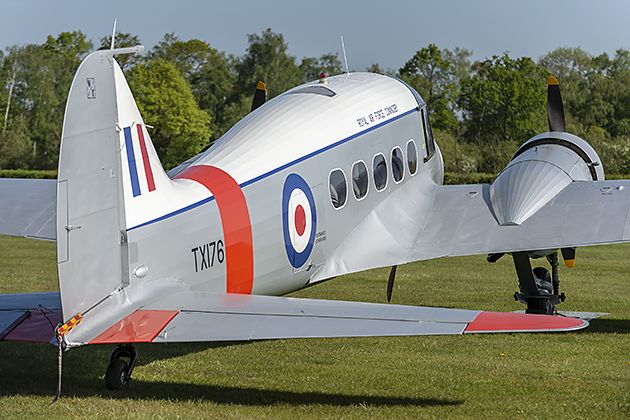
The maiden flight of the prototype using the company name Avro 652A (civilian variant: AVRO 652) took place on 24. March 1935. The civilian variant had flown on January 7, 1935. The Anson XIX Mk.2 is powered by two Armstrong Siddeley Cheetah 7-cylinder radial engines, each rated at 420 hp. Worldwide there are currently only three aircraft of this type in airworthy condition (a top-restored Avro Anson Mk.I bomber variant is owned by R & R Aviation in New Zealand, an Anson C.21 belongs to the Classic Air Force, a non-profit organisation, which emerged from the former company Air Atlantique).
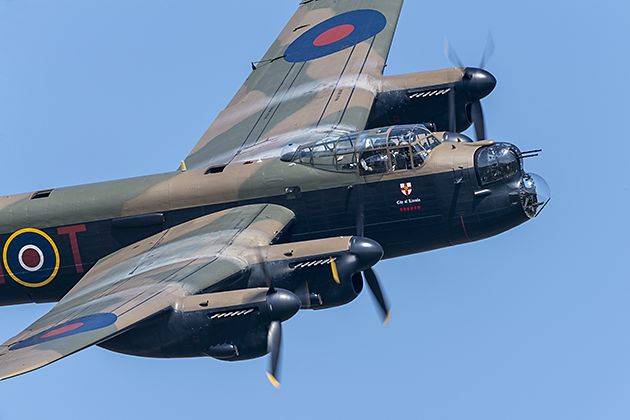
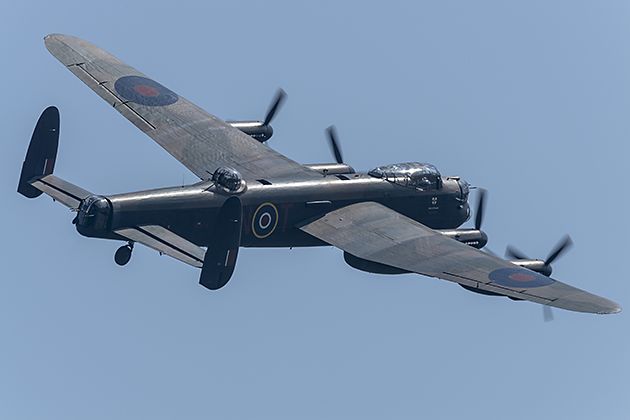
Most of the World War II RAF bomber crews learned to fly, navigate, etc. in an Avro Anson before swapping to the Vickers Wellington, Short Stirling, Handley Page Halifax or Avro Lancaster. The use of strategic bombers has always been the prevailing doctrine within the Royal Air Force. Only after the commissioning of British submarines carrying Polaris strategic nuclear weapons did the RAF abandon the role of strategic bombardment to the Royal Navy. Until then, it was the mighty heavy bombers that formed the backbone of the RAF. The last remaining 4-engine one was also the most famous and successful bomber of the Royal Air Force – we are talking about the Avro Lancaster B.Mk.II of the BBMF. This could not be missing in Old Warden – a formation flyby with the AVRO Anson was accordingly the highlight of the entire show for many spectators.
The enormously high loss rates of this type (over 25%) prompted the Air Ministry in 1941 to remove the Blenheim from front-line service.
R. Kysela
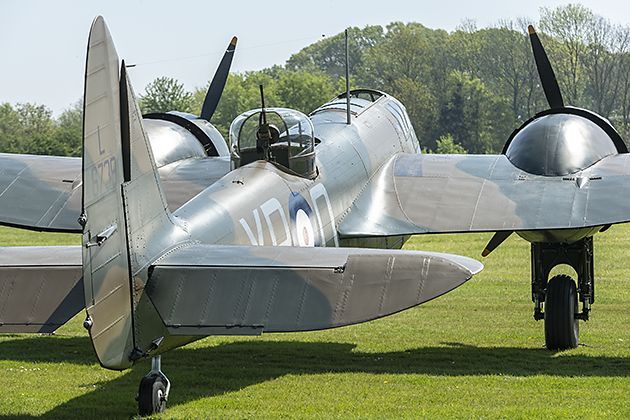
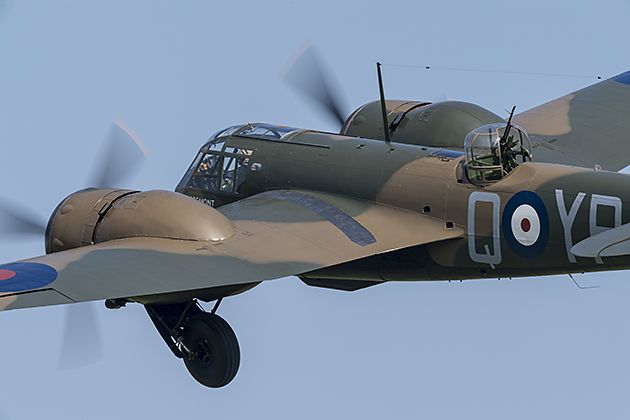
Another bomber and milestone serving the RAF was the twin-engine Bristol Blenheim. This shapely aircraft had its maiden flight on April 12, 1935 and was then considered a modern construction, which was superior to all popular fighter aircraft by its high speed. This resulted in a very weak defensive armament of just two Lewis .303 / 7.7mm machine guns, one in the wing root and one in a turret on the back of the fuselage. At the beginning of the hostilities in September 1939, the RAF Blenheim squadrons were hopelessly inferior to the modern German Messerschmitt Bf-109 D/E models fighter. The enormously high loss rates of this type (over 25%) prompted the Air Ministry in 1941 to remove the Blenheim from front-line service. The Bristol Blenheim will always have a place in history, as it was a Bristol Blenheim Mk.IV which flew the first raid over German enemy territory on 3 September 1939, the day of the British declaration of war on the German Reich, on a reconnaissance mission to Wilhelmshaven. The machine, shown in Old Warden, is owned by the Duxford-based Airplane Restoration Company, and personally flown by the owner of the company, John Romain. This is a Mk.1F, which was built from the cell of a Mk.IV Canadian production model and the front part of a Mk.I. This bow section was previously a rebuilt car! owned by a former employee of the Bristol company who drove it for 10 years with special permission.
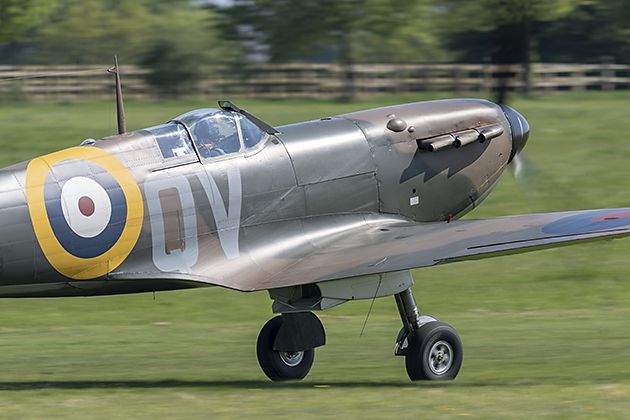
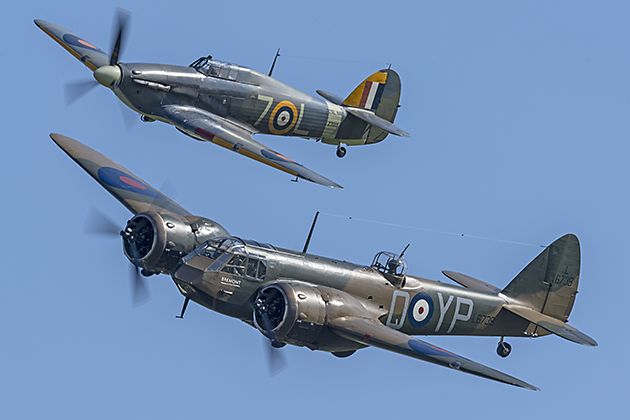
In addition to the already mentioned bombers, the audience in Old Warden was presented with almost everything, which was somehow associated with the Royal Air Force, and was also in its service. No less than three Supermarine Spitfires displayed. A Mk.Ia of the Imperial War Museum in Duxford, a Mk. XVI of the BBMF and a Mk. IX of the Old Flying Machine Company also from Duxford. Also two Hawker Hurricanes, one the only surviving Hurricane Mk.Ia, which participated actively in the Battle of Britain, as well as the last, still airworthy Sea Hurricane Mk.Ib took part in the flight demonstrations. Only the previously announced Gloucester Gladiator of the Collection was unfortunately unable to attend. On display was a Hawker Demon, a two-seat fighter aircraft from the 1930s. The Demon was created from the Hawker Hart series, a light bomber, which served as a template due to its very high speed. In contrast to the Hart, the Demon had a charged Rolls Royce Kestrel IIS V-12 engine (rated at 485 hp). By the end of 1938, all Demons were withdrawn from front line service of the RAF and then served as a training aircraft and/or the target towing aircraft.
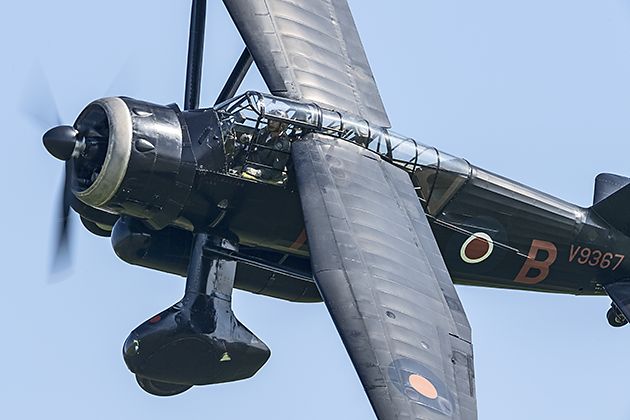

A Westland Lysander III S.D. impressed the crowd in Old Warden mainly by its size and the wide wings, which allowed it a very short take-off and landing. The version S.D. (SD stands for Special Duties) was used primarily for deploying and picking up agents behind the enemy lines. For this purpose, a 680 litre drop tank was mounted under the fuselage and a ladder attached to the rear cockpit, which allowed a quick entry and exit. In this configuration, with an all-over black paint, the Lysander flew numerous missions from the RAF Tempsford / No. 161 Sqn above occupied Europe until the end of 1944. The Lizzie, as it was affectionately called, was in many ways comparable to the German Fieseler Storch, however, it had movable slats and a considerably more powerful engine (a 882 hp Bristol Mercury XX 9-cylinder radial engine compared to the Storch’s Argus AS 10C eight-cylinder V-engine with a starting power of 240 hp.
The SE5a is an original machine, built in 1918, which saw action in the same year on the Western Front.
R. Kysela
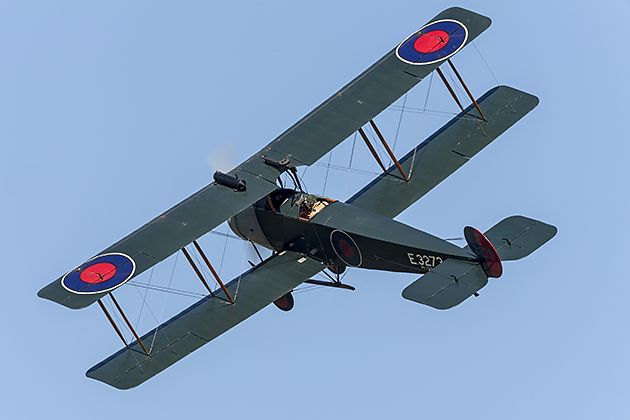
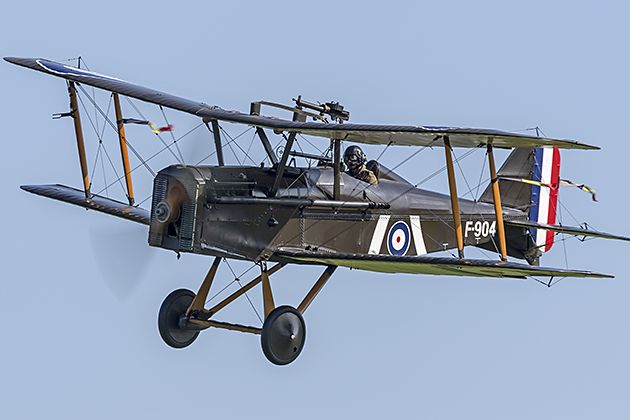
The very first years of the RAF were represented in Old Warden by the large number of aircraft from the time of the First World War. Starting with an Avro 504K flying over some replicas of known fighter aircraft, such as the recently completed replica of a Sopwith Camel and the Bristol M1C monoplane, to a Bristol F.2B fighter. The F.2B was still in active service until the early 1930s. A Royal Aircraft Factory SE5a flew together with this two-seater heavy fighter. The SE5a is an original machine, built in 1918, which saw action in the same year on the Western Front.
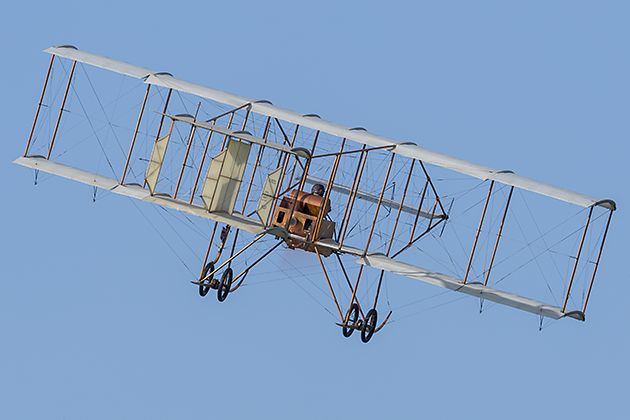
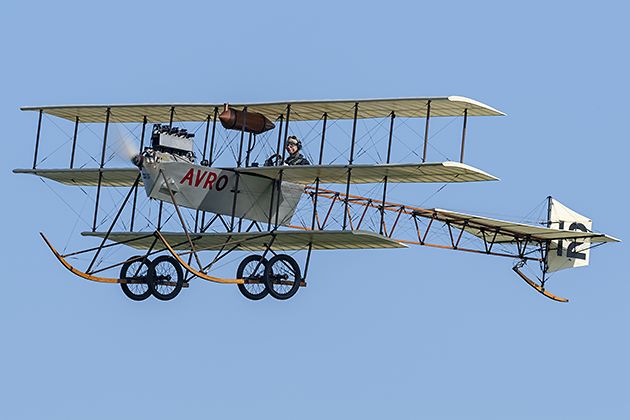
Regardless of the theme, but always dependent on the weather are the demonstrations of the aircraft, which are referred to as Edwardian stuff in the UK. This name refers to the epoch of the British King Edward VII (1901 to 1910), generally the time before the First World War. These fragile machines can only be presented in flight under perfect conditions. Given that conditions were met on May 6, viewers could enjoy flybys by three of these amazing machines. The Bristol Boxkite and the Avro Triplane are all replicas made for the classic movie Those Magnificent Men in Their Flying Machines starring Gert Froebe, James Fox and Sarah Miles in 1965. The third machine presented, a Blackburn Monoplane Type D, is a real rarity. The type D is the world’s oldest, still airworthy aircraft from British production – built in 1912!
VERDICT: There are few places in the UK that are so well suited for an event of this nature as the Old Warden Aerodrome in Bedfordshire. If the weather also plays along, a perfect day is guaranteed! This was definitely the case on May 6, 2018. The Shuttleworth Collection presented itself in a professional way with a few selected guests, leaving nothing to be desired. A sensational flying programme, coupled with a great overall event and the whole surrounded by a beautiful backdrop – what more could you ask for?
We would strongly recommend international aviation enthusiasts visiting the UK to put the Shuttleworth Collection on their itinerary and try to visit on an airshow day. If the weather is good you will not be disappointed. If you can’t get there for an airshow go anyway to see the collection in the museum hangars, again you will not be disappointed.
Our special thanks go to Ciara Harper, as well as to Tim Callaway, who was the icing on the cake with his magnificent style as a commentator – many thanks Tim!
Our further thanks also go to the Shuttleworth Veteran Aeroplane Society (SVAS), a charity whose members assist in the running of the events and the raising of funds to support the collection and purchase aircraft for the collection. The Charity are always looking for new members of the team, so if you would like to do more than watch and become part of the event look up www.svasweb.org
For further information on airshow dates, tickets and the collection visit www.shuttleworth.org
Will Moore / Robert Kysela / CHK6; proofreading by Christine Moore
*the other events celebrating 100th RAF Anniversary are: RAF Cosford Airshow (10. June), Royal International Air Tattoo (13 – 15. July), as well as Battle of Britain Airshow in Duxford (22./23. September)

